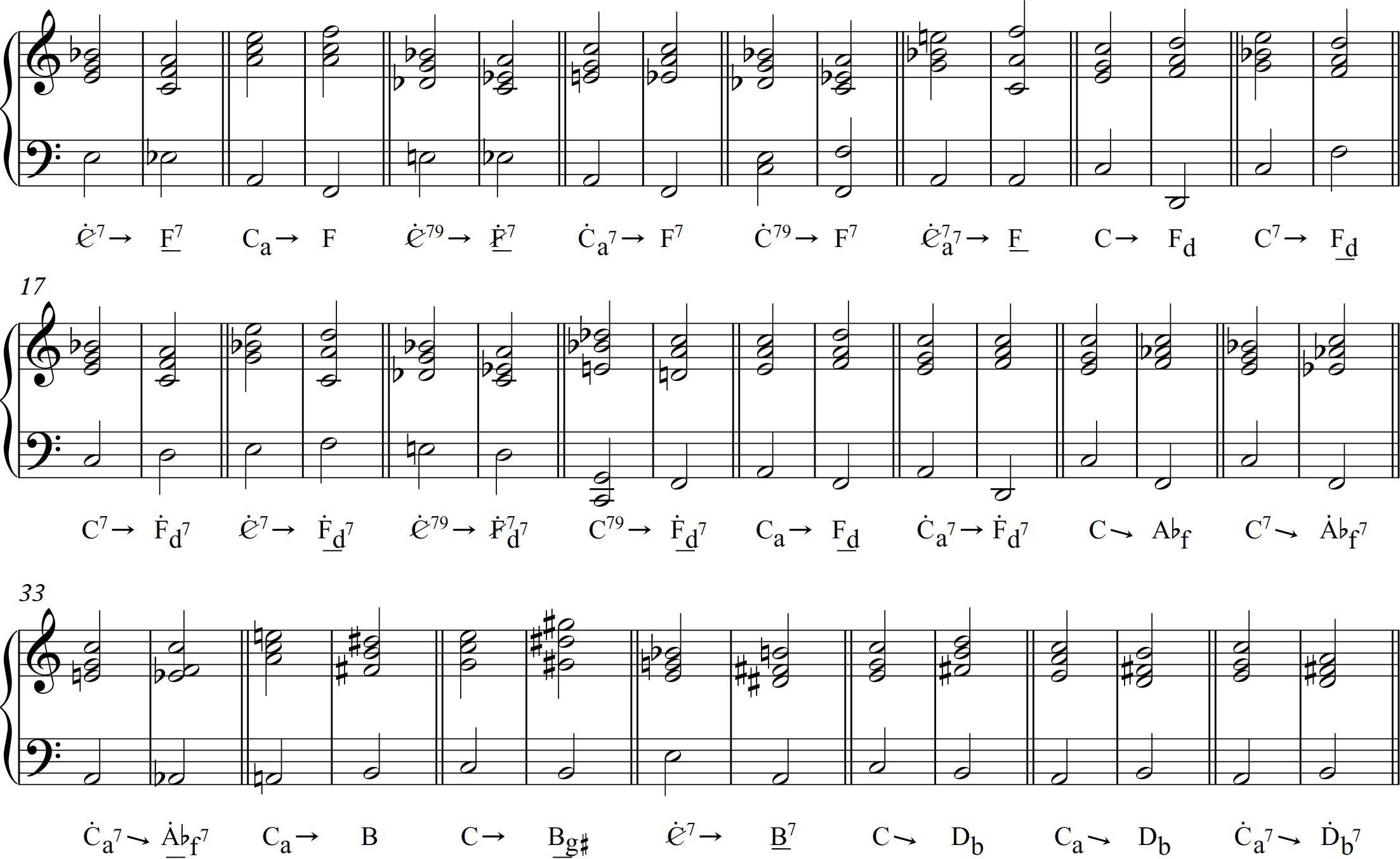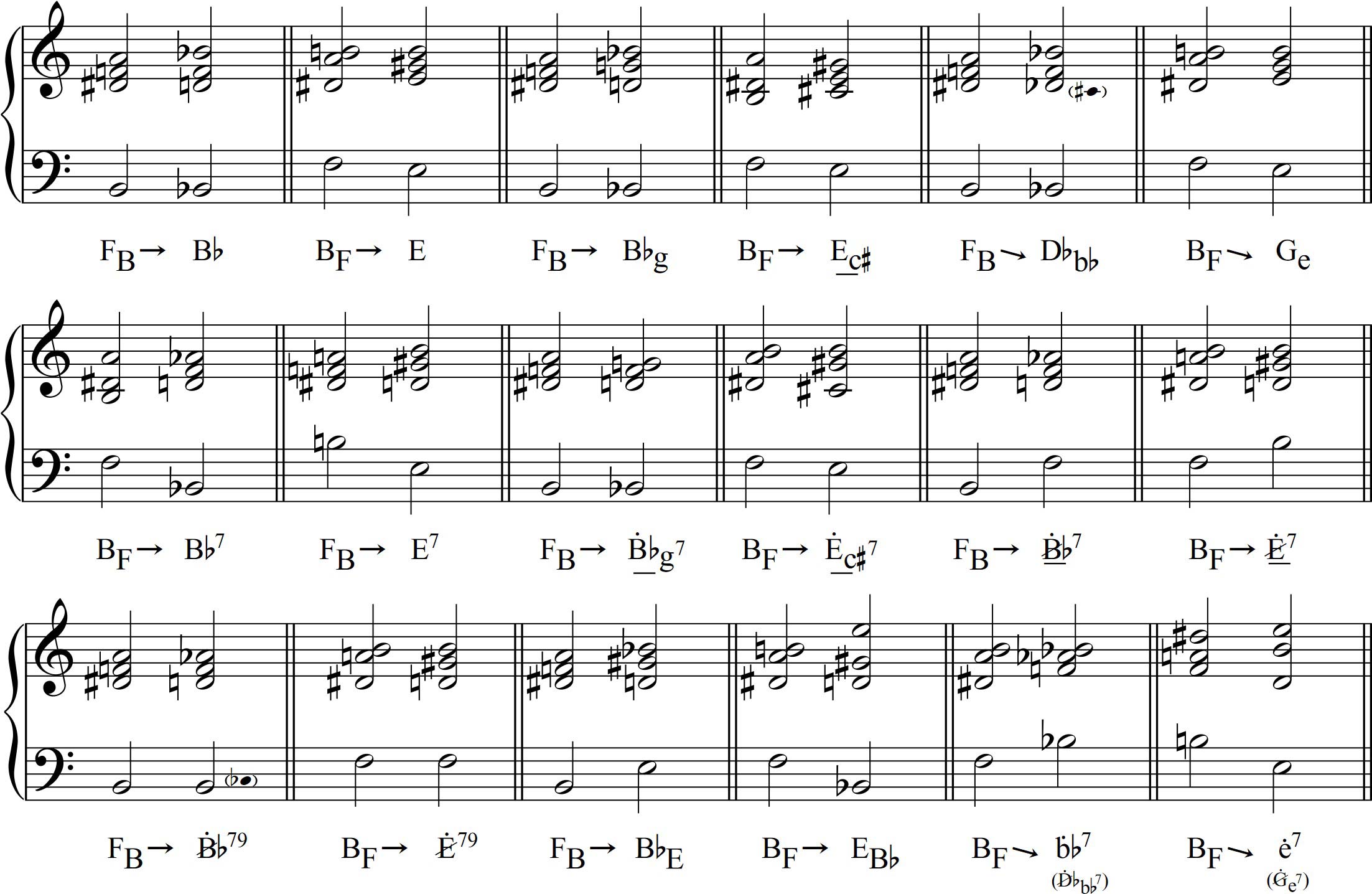6. Examples of harmonic progressions with homotonic relaxions
In this chapter we will see examples of (local) homotonic relaxions between fundamentals in weak tonal fields, that is, sequences of chords that create a continuously fluctuating tonality so tonal tensions do not influence much because they are weak. It is in this situation that homotonic relaxions acquire greater meaning, in spite of the chromatism of the chord links.
An arrow will indicate a htonal or Phrygian relaxion between fundamentals.
The examples can be heard in a playlist on youtube (https://www.youtube.com/user/llbape/playlists).
6.1 Relaxions between chords with
a single functional fundamental
In this section we will give examples of htonal relaxions using major, minor and dominant chords with a single functional fundamental, that is, only containing an interval of M3 or tritone (or both).
6.1.1 Htonal relaxions following
the circle of fifths
In Example 6-1 we can see htonal relaxions between major triads following the circle of fifths.
Ex. 6-1 (Listen on youtube)

In Example 6-2 we have htonal relaxions between minor triads following the circle of fifths. The chords are in first inversion but with the functional fundamental in the bass. If other inversions were used, the effect of homotonic relaxion between chords would continue to occur in the same way, perhaps adding possible sonance tensions or relaxions if the inversions of the chords were different between them.










































